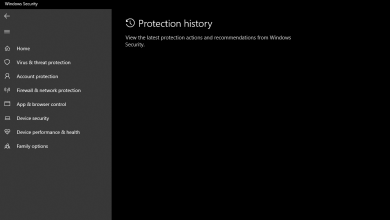How to Bypass the “This Feature Requires Removable Media” Error
You may encounter the error “This Feature Requires Removable Media” when attempting to reset your local account password. This error occurs because resetting the password necessitates a previously created password reset disk as a backup measure. Consequently, only the individual possessing the password reset disk can access your PC.

However, if you have not created a reset disk, you won’t be able to reset the password using this method. Nevertheless, you still have other available options for resetting your password.
1. Use System Image Recovery to Change Your Password
To circumvent the Windows login, you must rename `cmd.exe` to `Utilman.exe`. `Utilman.exe`, also known as the Ease of Access Center, facilitates login for users with disabilities.
The strategy involves renaming `cmd.exe` to `Utilman.exe`, so when you press the Ease of Access button from the login window, the Command Prompt window—running with system administrator privileges—appears instead of the Ease of Access options.
Accounts with system administrator privileges can access the highest settings level, which we can use to change or remove the password for the local account.
To rename `cmd.exe`, you must access the system files. Here, we will use System Image Recovery, a utility that allows users to restore the state of Windows when they have created a backup. However, our intention here is to use it solely to navigate the system files and rename `cmd.exe` to `utilman.exe`.
- Turn off your PC using the power button.
- Then, turn it on again. When the Windows logo appears, interrupt the process by pressing the Power button to shut it down.
- Keep repeating these steps until you boot into the Windows Recovery Environment.
- Select Advanced Options > Troubleshoot > Advanced Options > System Image Recovery.

- Once in the System Image Recovery Window, click Next > Advanced > Install a driver > OK.

- Locate the disk where Windows is installed. Drive letters may differ; locate the correct drive and navigate it.
- Go to the Windows > System32 folder, and first rename `utilman` to `utilman1`.

- Next, rename `cmd` to `utilman`. Refresh the window to confirm the changes.

- Exit all windows and select Continue to boot into Windows.
- At the login screen, click the Ease of Access button to open the Command Prompt.

- Now, you are operating under the system account, which has significant privileges in Windows.
- List all user accounts by typing the command net user in the Command Prompt.
- Select the user account whose password you wish to reset by typing the following command.
net user "account name" *
- If your account name includes spaces or special characters, enclose it in quotation marks when entering the command. For example: net user “John Doe” *

- Type the new password, press Enter, and then retype it for confirmation. To remove the password, press Enter twice. The password will not be displayed for security reasons.
- After changing the password, close the Command Prompt and attempt to log in with the new credentials.
- If successful, ensure that you revert `cmd` and `utilman` to their original names.
2. Perform a Factory Reset
If you cannot regain access to your local account via the above method, consider backing up your data onto a flash drive through System Image Recovery in the Windows Recovery Environment prior to performing a system reset.
- Hold down the Shift key, click the Power icon, and then choose Restart.
- Do not release the Shift key until the PC has completely shut down.
- After restarting in the Windows Recovery Environment, select Advanced Options > Troubleshoot > Reset this PC.

- Select Keep my files and choose Local Reinstall.

- Click Reset to initiate the reset process.
3. Create a Password Reset Disk
After resetting your PC, it is strongly advised you create a password reset disk. Thus, if you forget the password again, you can easily reset it using the ‘forgot password’ feature.
- Open the Start Menu and type Control Panel.
- Press Enter to access the Control Panel.

- Navigate to User Accounts and click on Create a password reset disk.

- Then, click Next, and select a USB flash drive to use for the password reset disk, then click Next again.

- Provide the current computer password when prompted, then click Next.

- Lastly, click Yes, and then Next, followed by Finish to create the password reset disk.
- Verify that the password reset disk works properly by testing the feature with your USB flash drive.
Utilizing a Microsoft account rather than a local account in Windows simplifies password reset. It is particularly beneficial for those prone to forgetting passwords and looking to avoid future complications.
Resetting your Windows login password with a Microsoft account is as straightforward as resetting a Facebook account password. Hence, consider transitioning to a Microsoft account on your PC if you haven’t already.





